A PR representative provided Play Critically with a review code for this videogame.
6-Sided Stories is a gentle and relaxing puzzle videogame. Each of its puzzles presents me with an obscured image which is divided into dozens of hexagonal puzzle pieces. My task is to manipulate the hexagons until the image is clarified, solving the puzzle. There are thirty-six puzzles in total to solve, each depicting the homegrown adventures a group of house pets have in all the seasons of the year.
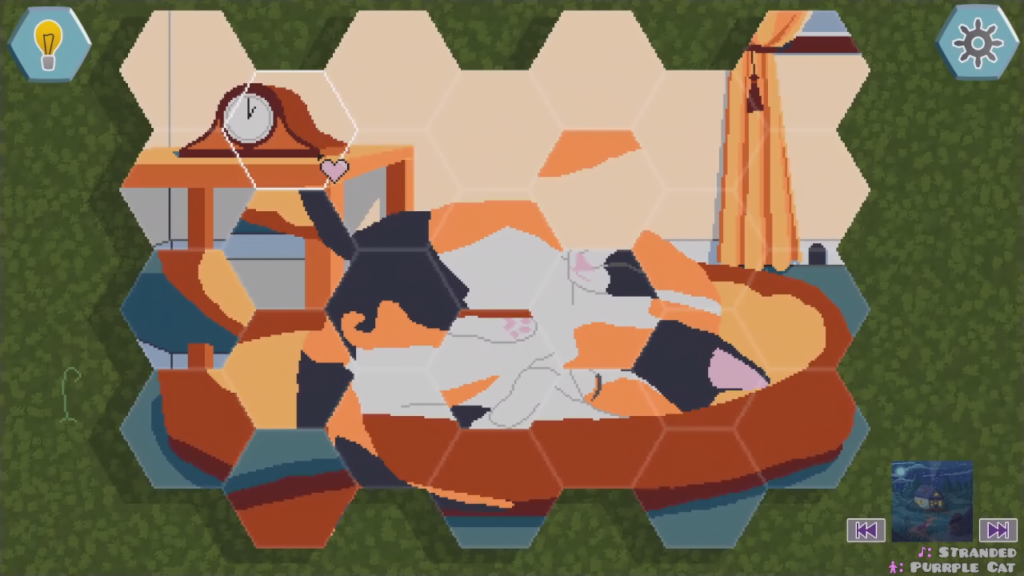
6-Sided Stories has simple mechanics. When a puzzle begins, I am shown the completed image I must try to assemble. The hexagonal puzzle pieces then scramble themselves. I must try to revert the image back to its original appearance. Notably, the puzzle pieces never move. Not once in 6-Sided Stories is a puzzle solved through the familiar action of moving a piece from one location to another. Instead, the images are scrambled using three other methods.
Each puzzle scrambling method is introduced one at a time and lingers for a few puzzles before introducing the next. First, pieces flip themselves vertically. I can flip them back by clicking on the top or bottom of a puzzle piece. Once this has become routine, pieces begin to flip themselves horizontally, which I can flip back by clicking on the piece’s left or right side. When this is ordinary, some pieces may start flipping themselves in both directions. The final complication is to invert the colors inside the puzzle piece. I can toggle this inversion by clicking the piece’s center, though it’s just as easy to invert a piece whose colors are correctly aligned. A discerning eye is key.
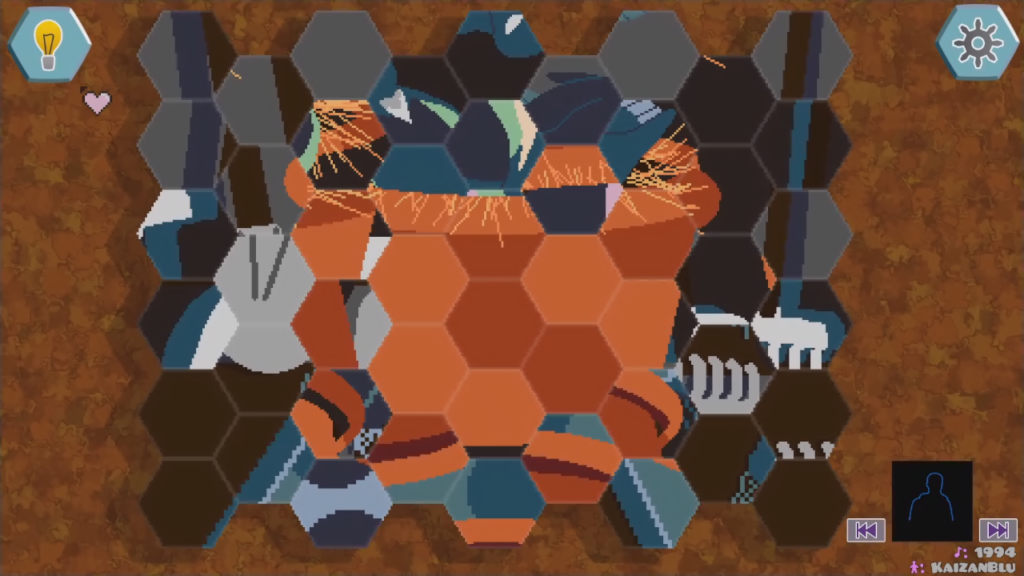
Puzzles grow in scale and complexity as I solve them. The earliest puzzles, not counting the introductory four-piece tutorial, have 28 pieces, and only a fraction of them need to be flipped or inverted to restore the image. The latest puzzles grow up to 54 pieces in size and take advantage of their larger scale to increase the ratio of scrambled pieces. By the final set of puzzles, nearly every puzzle piece needs to be manipulated in some way.
These simple mechanics mean the solution to any puzzle is never more than a few clicks away. This is intentional. 6-Sided Stories is made to be a relaxing puzzle videogame, not a taxing one. No puzzle takes more than a few minutes to solve. To ensure that I am always progressing towards a solution, I can even bring up a copy of the original image to compare the puzzle to at any time. When I get down to the final few steps of a puzzle, if I go a few seconds without changing a piece, ones that still need to be flipped or inverted will wiggle, drawing my eye to them. I cannot disable these assists. 6-Sided Stories doesn’t want me stuck. It wants me to enjoy myself.
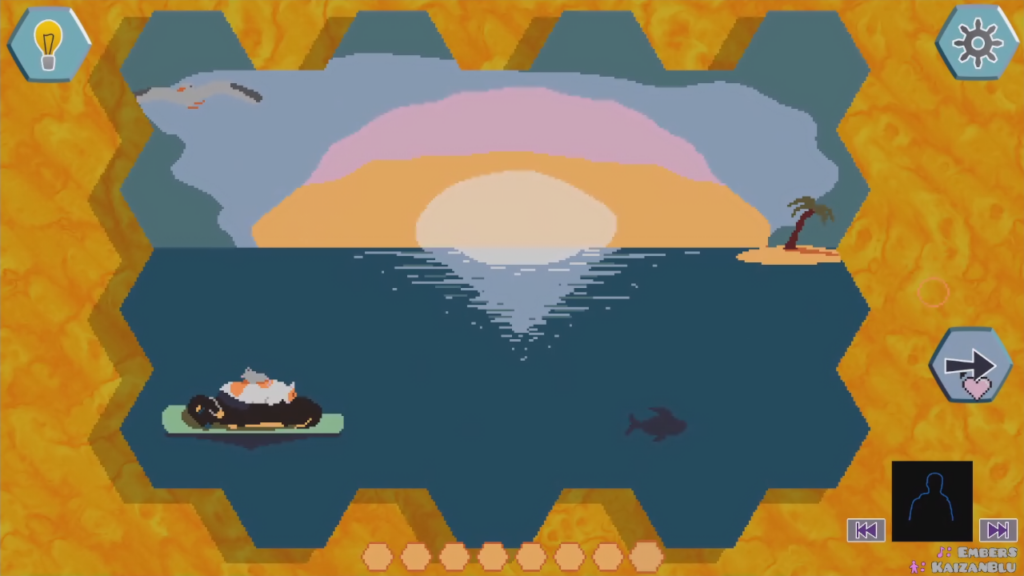
The images I reveal by solving puzzles depict a simple story without using a single word of text. The first image shows a calico cat sleeping comfortably in its bed in a warmly decorated home. In the next image, it encounters a mouse scampering across the carpet. A chase does not ensue. The next several images show the cat and mouse working together to raid the kitchen’s cookie jar. The remaining images are divided into sets that tell similar gentle and simple stories. Vacationing on a beach in the summer, the cat and mouse encounter a dog. The dog smashes the friends’ sand castle, but they don’t hold a grudge. Instead the duo becomes a trio, they go scuba diving together, then fall asleep on a floating surfboard beneath a sunset. Additional images set in autumn and winter show the friends getting up to other light and silly activities, adding new animal friends to their company along the way.
These friendly and fanciful images give 6-Sided Stories the quality of a children’s picture book. This greatly enhances its gentle spirit. There is little conflict depicted. Moments that should result in a fight or an argument are denied those events. Problems disappear in the liminal stages between images, showing the animal friends reconciled and embarking on their next trip together. 6-Sided Stories portrays a peaceful and colorful world where there are no problems, there is only the next adventure, and every person someone meets is their new best friend.
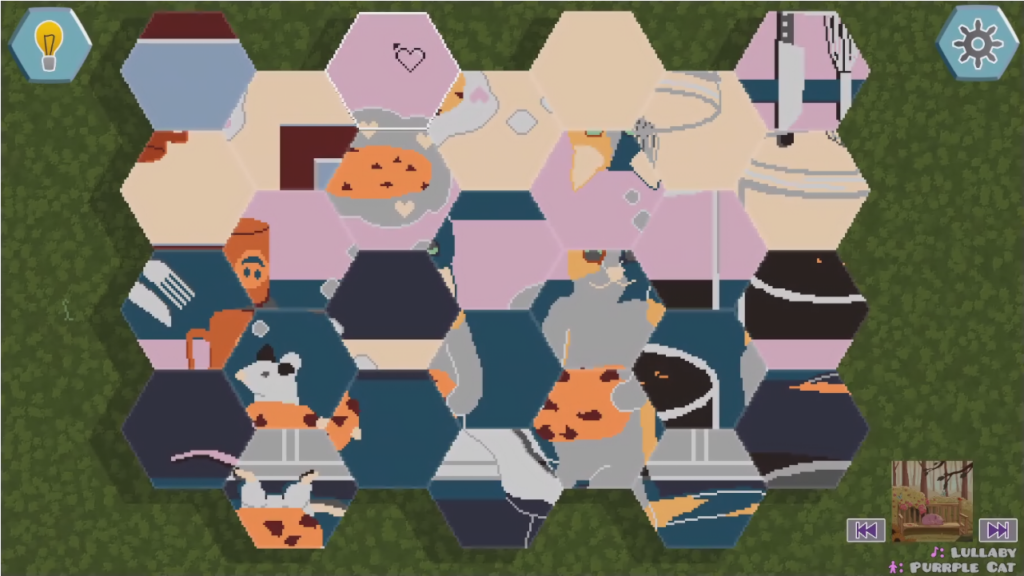
Another quality the images have is crudity. The images are made with talent and effort; I can sense an experienced artist’s hand at work behind them. They are also made with simple colors and visible pixelation, as though every image has been composed in Microsoft Paint with the Pencil and Paint Can tools. Before I take the time to really look at the images, my initial reaction is bemusement, as though I am seeing the contents of a child’s grade school portfolio rendered into the backdrops of a puzzle. When I dismiss this first impression I recognize that the simple colors and jagged, pixelated lines serve an important purpose in creating the puzzles.
I first notice it in the curtains that hang from the window during the springtime story. I am certain that I have correctly arranged every puzzle piece back into its proper position, but the puzzle does not solve and the button that takes me to the next image does not appear. After I sit and stare for some seconds, a puzzle piece containing a portion of orange curtain wiggles, and I finally recognize it. All of the jagged lines that depict the curtain across multiple puzzle pieces connect, but they do not curve in the same direction. I flip the puzzle piece from left to right, and the puzzle solves.
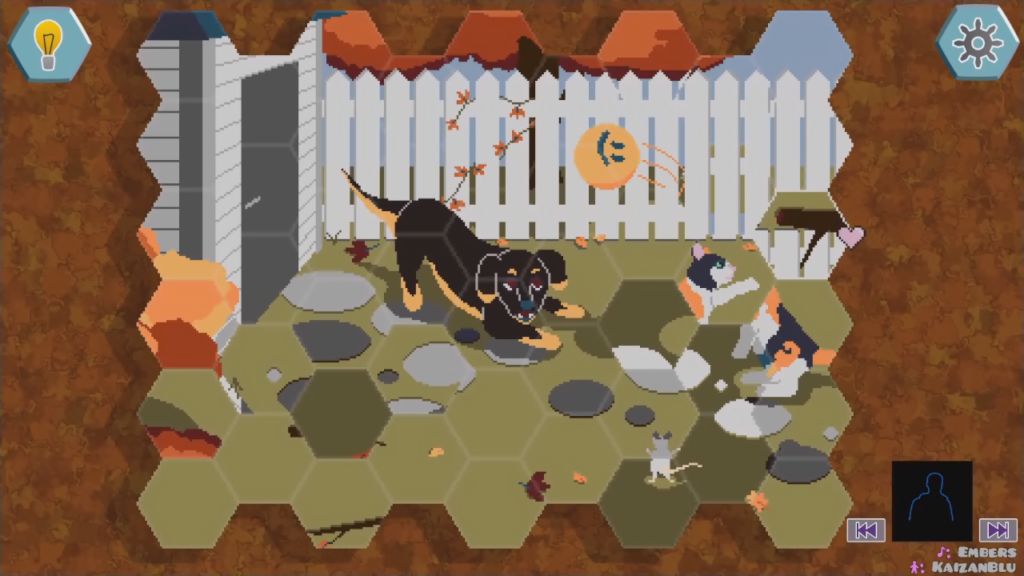
Similar missteps happen to me frequently in 6-Sided Stories. Anywhere there is a dense connection of lines, like the cat’s calico coat, the boards on the backyard fence, and the brickwork around the living room fireplace, there is a piece where the pixelated lines appear to connect. Only by closely examining their curves and angles do I see they do not flow together. The images that tell the stories may have the cheap, 8-bit quality of 1990s Microsoft Paint. Without that quality, the puzzles would be much easier to solve as the different orientations of the puzzle pieces would stand out much more. It’s a smart design concession that uses limited resources, by necessity or with intention, to make the videogame more complex and interesting.
While I solve 6-Sided Stories’ puzzles, I am accompanied by its soothing soundtrack. Each track is a downtempo electronic piece that suits the relaxed and rapid puzzle-solving atmosphere, from the bluesy saxophone in A Wavy Night’s Breath to a steady drumbeat playing beneath amiably discordant piano chords in 1994. The result is an effect I could get by listening to any free YouTube music channel or streaming radio station but I appreciate the effort to curate songs specifically for these puzzles. Most, if not all of the tracks are used with a Creative Commons License from indie artists Tokyo Music Walker, KaizanBlu, Purrple Cat, and Artificial.Music, adding to the handmade feel.
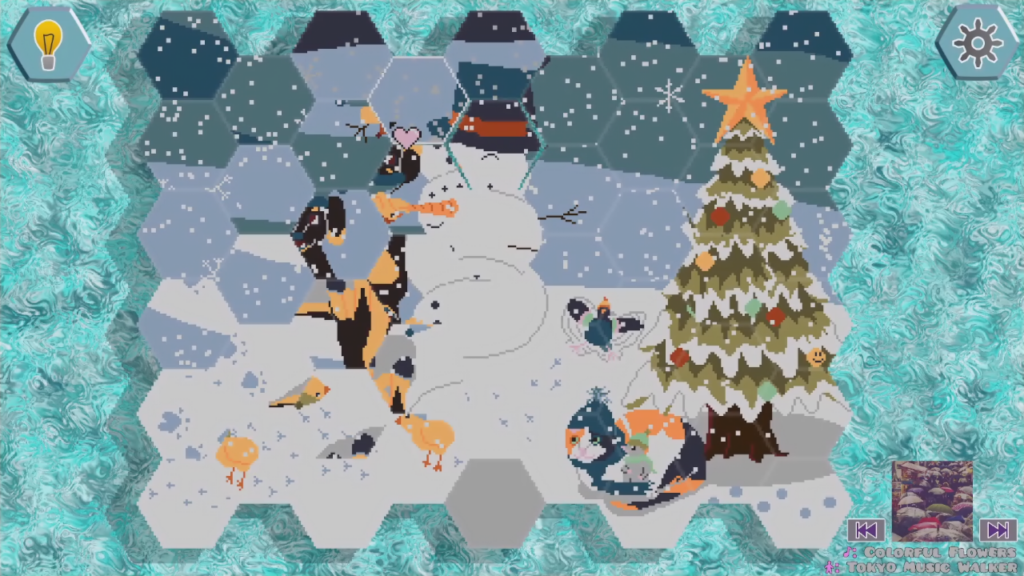
6-Sided Stories is a pleasant and relaxing puzzler. It does not tax my critical thinking skills. The stories told by its unscrambled images do not challenge my beliefs or suggest new ideas. It is a non-threatening videogame. It takes ninety minutes of my day and occupies them with hexagon-flipping pleasure and soft musical bliss, distracting me for a short time from my fears, doubts, and obstacles. Sometimes that’s exactly what I need from a videogame. 6-Sided Stories is a balm for a bad day.